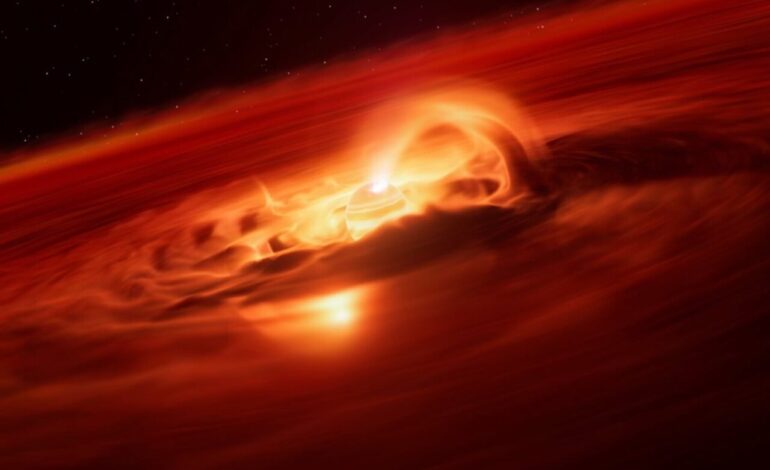Rogue Planet Feasts on Gas and Dust at 6 Billion Tons per Second

A rogue planet known as Cha 1107-7626 is currently consuming gas and dust at an astonishing rate of 6 billion tons per second. Located approximately 620 light-years away in the Chameleon constellation, this planetary body is in a unique stage of formation, actively feeding on material from a surrounding disc left over from its birth. This remarkable discovery was revealed by astronomers using the European Southern Observatory’s (ESO) Very Large Telescope and is documented in a recent publication in The Astrophysical Journal Letters.
Rogue planets, like Cha 1107-7626, are not bound to any star, which allows them to exhibit unusual behaviors. They can form either by being ejected from their original star systems or by collapsing independently from clouds of gas and dust. These free-floating planets often retain discs of material around them, which they consume through a process known as accretion.
The study of Cha 1107-7626 has shown an exceptional growth rate that has accelerated in recent months. Astronomers observed that by August, the planet was accreting material at a rate nearly eight times faster than just months prior. According to Víctor Almendros-Abad, an astronomer at the National Institute for Astrophysics (INAF) and lead author of the study, this represents “the strongest accretion episode ever recorded for a planetary-mass object.”
Unprecedented Growth and Magnetic Activity
Despite its youth, Cha 1107-7626 boasts a mass estimated to be between five to ten times that of Jupiter. The researchers suggest that its rapid growth may be linked to significant magnetic activity, which enhances the inflow of material from its surrounding disc. Interestingly, during their observations, the team detected water vapor in the disc, a phenomenon not previously noted. This change in the disc’s chemistry indicates that even lower-mass planetary objects can possess strong enough magnetic fields to influence their accretion processes.
Amelia Bayo, an ESO astronomer and co-author of the study, expressed the excitement surrounding these findings. She stated, “The idea that a planetary object can behave like a star is awe-inspiring and invites us to wonder what worlds beyond our own could be like during their nascent stages.”
This discovery not only challenges traditional notions of planetary formation but also opens up new avenues for understanding the complexities of planetary development in the universe. As astronomers continue to study Cha 1107-7626, they may uncover more about the life cycles of rogue planets and their potential to harbor unique characteristics during their formative years.
The implications of this research extend beyond the confines of astronomy. Understanding the dynamics of rogue planets could provide insights into the formation of planetary systems, enhancing our knowledge of the universe and the diverse environments within it.






